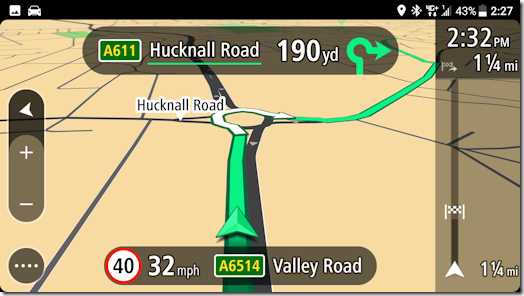 Since I first wrote this article, things have changed somewhat. More and more cars now have electronic handbrakes, along with other brake-assist functions. Where a car has a manually operated lever (the classic handbrake), refer also to this article on whether or not to push the button when you apply it. Although I have hitherto referred to it as a “handbrake”, with the electronic system becoming the norm there is now good reason to switch to the alternative (and more correct) term of “parking brake”, so that’s what I’m going to do from now on.
Since I first wrote this article, things have changed somewhat. More and more cars now have electronic handbrakes, along with other brake-assist functions. Where a car has a manually operated lever (the classic handbrake), refer also to this article on whether or not to push the button when you apply it. Although I have hitherto referred to it as a “handbrake”, with the electronic system becoming the norm there is now good reason to switch to the alternative (and more correct) term of “parking brake”, so that’s what I’m going to do from now on.
I was originally prompted to write this article after I saw a “debate” on a defunct forum about using the parking brake. It was started by an ADI whose pupil got a driver (“minor”) fault for not using it at a junction. The ADI in question was obviously convinced that DVSA was at fault, even though he had neither sat in on the test or listened to the debrief. The possibility that his pupil had actually done something wrong didn’t enter into it.
Driving: The Essential Skills (TES, 2015 edition) – which is effectively the syllabus that learners should be taught from – says:
You should normally apply the parking brake whenever the vehicle is stationary.
Apply the parking brake according to the instructions in your vehicle’s handbook and put the gear lever into neutral when you’re stopped at traffic lights or queuing behind other vehicles, unless the wait is likely to be very short.
Your foot could easily slip off the footbrake if, for example, your shoes are wet or if you’re bumped from behind. You could then be pushed into another vehicle or a pedestrian.
Always leave a safe gap between your vehicle and the vehicle in front while queuing, especially on a hill. This will give you room to manoeuvre should the vehicle in front roll back.
In vehicles fitted with automatic transmission, the use of the parking brake is even more important. The parking brake will help avoid
- the possibility of the vehicle creeping forward
- the vehicle surging forward if the accelerator is pressed accidentally while in ‘D’ (Drive).
Bear in mind that although this is from the current version of TES, it is now at least five years old. As I said above, things have changed a lot in the last few years (an updated version is due to be published soon). However, as far as the manually operated parking brake is concerned, the important bit here is that you “should normally apply the parking brake whenever the vehicle is stationary… unless the wait is likely to be very short”.
It couldn’t really be much clearer. You are going to be marked on the use of the car’s controls on your test, and if you don’t use the parking brake in a situation where really you ought to then you will pick up at least a driver fault. If you roll backwards or forwards significantly on a gradient, for example, you are likely to pick up a serious or dangerous fault – especially if there’s someone you might hit.
On the point about putting the car into neutral, I really only advise my pupils to do this this if they know what they’re doing. Modern cars usually have an auto-shutdown feature (the engine stops when you go into neutral and take your foot off the clutch, then starts up again when you put the clutch down), and this is an eco-driving feature. However, at the moment you can’t fail your test on eco-driving, but you most certainly can for not using the controls properly, not moving off promptly, or stalling in the worst situation imaginable (e.g. .on a railway line, in the middle of a busy junction, or at the set of lights that only lets four cars and a couple of Audis and a BMW through). Many learners have enough trouble finding the correct gear every time as it is, especially when they are nervous or panicked, so absolutely the last place I want them to find 3rd instead of 1st is in any of those places.
With some temporary traffic lights, or in very heavy and slow-moving traffic where you are a long way back in the queue at a junction, there may be a longer wait, so there is a good excuse to go to neutral and rest your legs. The same is true at level crossings, where you can calmly get ready as the train passes and the barriers begin to rise. The decision about whether to put the car into neutral or not is the driver’s. Just remember that it isn’t a fault (yet) keeping it in gear at traffic lights, nor is it a fault putting it into neutral – but screwing up when you try to move off probably would be. You simply do what is most appropriate – and what is easiest for you to deal with.
DT1, which is DVSA’s internal SOP for examiners, used to make several references to use of the “handbrake”, but these are no longer there. However, they are implied by virtue of what TES says, because the examiners expect to see driving close to what TES advises. TES makes several direct references to the parking brake:
General… REMEMBER, when you park your vehicle, always leave it in gear and make sure that the parking brake is fully on.
Emergency Stop… Unless you’re moving off again straightaway, put the parking brake on and the gear lever into neutral.
Turn in the Road… It may be necessary to use the parking brake to hold the vehicle if there’s a camber in the road [during turning]… Apply the parking brake if necessary, and select first gear [before moving off].
Parking… Before you leave the vehicle, make sure that it’s in gear and the parking brake is applied firmly.
Parking Facing Uphill… Leave the vehicle in first gear, with the parking brake firmly applied.
Parking Facing Downhill… Leave your vehicle in reverse gear, with the parking brake firmly applied.
In addition to these, any time TES says that you should stop – at junctions, or when dealing with animals, for example – possible use of the handbrake is implied. The decision is the driver’s, with the proviso that not using it when you could is not a fault, but not using when you really ought to probably is.
At junctions, when I was driving cars with manual parking brakes, I advised my learners to be aware of the gradient – is it up or down? Not using the parking brake on downward-sloping junction does not carry the same risks as not using it on an upward-sloping one. Initially, when it started being supplied as standard on my cars, I avoided using hill start-assist (which holds the brakes for a short while after you release the brake pedal) because I knew my pupils wouldn’t have it when they started driving on their own. But that was over five years ago, and now there is a good chance most will have it on any car they buy, so I leave it turned on – but explain and demonstrate how it works, just in case they get a banger which doesn’t have it.
My most recent car is the first one I’ve had which has an electronic parking brake. It also has a foot brake-assist function (where the footbrake stays on even if you remove your foot from the pedal). There’s nothing I can do about the parking brake, but I thought long and hard about the foot brake-assist (which can be turned on/off) before deciding to use it on lessons. I still make sure that my pupils use the parking brake at the right times, but the foot brake-assist means using it considerably less.
One thing about the electronic parking brake is that it impacts the “show me” question about testing that it is working before driving. With a manual/old-style parking brake, the procedure is to apply the foot brake to prevent the car rolling, then release the parking brake and apply it again, ensuring that it pulls tight and doesn’t hit the stop at the end of its travel. With an electronic parking brake you can’t do that, so the procedure I teach now is to apply the foot brake as before, manually disengage the parking brake using the switch, then engage it again and feel for the pedal movement which tells you it has gripped.
At some stage, most learners will ask something along the lines of how long they should be stopped for before using the parking brake. Some ADIs can’t work with variables, and after using the line “when a pause becomes a wait” they apply a number – for example, a pause is under 3 seconds, a wait is over that. That’s nonsense, and there is no way you can say that more than 3 seconds always needs the parking brake. It depends on the situation.
Remember that your foot can slip on the pedals. I had a pupil pass her test not long ago who stalled during her manoeuvre because it had been raining and her foot slipped off the pedal.
Finally, there is the matter of brake light dazzle. Ignore anyone who tells you that it isn’t an issue, because it most certainly is. Modern brake lights can be very bright indeed, and at night – especially in winter, with longer nights – and when it is raining, the brightness can be both painful and dangerous, because the resulting contrast means it is more difficult to see dark objects, such as pedestrians and cyclists. It becomes even more relevant with foot brake-assist, since the brake lights stay on even when you take your foot off the pedal. I teach my pupils that they need to be aware of this and use the parking brake more frequently at night. After all, if I can be aware of the problem and use the parking brake accordingly, there’s no reason why my pupils can’t if I’m doing my job properly.
Will I fail my test if I don’t use the parking brake?
The parking brake is there to help prevent the car rolling backwards (or forwards) into bad situations, and to make it safe when parking. Although you are unlikely to fail your test simply for not using it in a given situation where perhaps you should have, if you do end up rolling backwards or forwards (i.e you’re not in control) your chances of failing increase significantly. A good example would be when you stop at a pedestrian crossing to let people cross. If you’re at the front of the queue, and especially if the pedestrians include children, just think what could happen if your foot slipped or someone bumped you from behind. In this situation – and certainly on your test – not using your parking brake is potentially dangerous and the examiner could easily mark it accordingly.
If you stop facing up a steep slope, common sense says the parking brake will help you avoid rolling backwards when you move off again (obviously, hill start-assist and foot brake-assist would change this as long as you know how to use them). However, if you choose not to use it and remain in control then it won’t be marked. Remember, though, that your right foot will be on the brake, and if you get the timing wrong and lift the clutch too far before you’ve switched your right foot to the gas pedal then you will stall – which means you’re not in control – and then you’ll have to try to stay in control and avoid rolling back all over again as you restart the engine and give it another shot. Just use the parking brake.
It is perfectly OK to make use of any special features of the car, such as hill start-assist and foot brake-assist. You should still use the parking brake for any lengthy stops.
When should I use my parking brake ?
Whenever it would help prevent the car from rolling backwards or forwards.
It can also help you avoid stalls if you don’t have hill start-assist. If you have the parking brake on, it means you can set the gas and find the bite ready to move off quickly. If you’re holding the car still using the foot brake, you’re likely to get your timing wrong and lift the clutch too much before you’ve set the gas properly – which increases the likelihood of stalling. You’ll get better at being able to do that with time (though you’ll probably soon be driving a car with the various brake-assist features), but certainly to begin with – and for many people this includes even the point at which they’re at test standard – using the parking brake will help you avoid stalling in many situations.
As I said above, it’s perfectly OK to make use of any special braking features of the car, such as hill start-assist and foot brake-assist, but use the parking brake for any lengthy stops.
When is it compulsory to use the parking brake?
It isn’t (except when parking and leaving your vehicle). You should use the parking brake whenever it would help you prevent the car from rolling backwards or forwards when it isn’t supposed to. In theory, it would be possible to not use the parking brake at all on your test (even more so if you have hill start-assist and foot brake-assist features on your car) and still not get faulted for it. However, the reality is that there will be times when not using it is just asking for trouble, and much will depend on the kinds of roads you’re driving on.
Use the parking brake if you’re dealing with steep hills, where the risk of rolling back is going to be very high. With new drivers, a roll back is often accompanied by a stall as they panic and lift the clutch too quickly. Not using the parking brake might not be recorded as the fault, but the stall probably would be, and if it is followed by more stalls or causing a hold up for traffic behind, that’s almost certainly going to go down as a “serious”.
Using the parking brake wisely is good practice. You won’t be doing your test at night, but you’ll almost certainly be driving at night once you pass, and understanding the significance of brake dazzle is important. Using the parking brake is therefore something you’ve got to be prepared to do.
Is it a fault if I don’t use the parking brake?
If you don’t use the parking brake when you perhaps ought to a few times on your test, it probably won’t be marked. If it leads to other issues then it might. If you don’t use it when you really should, you’re just asking to be faulted. Use it if you need to.
An experienced (and good) driver will use the parking brake less than a new (good) driver because they’re likely to be able to hold the bite better. Someone who is not so good with holding the bite – no matter how much experience they have – really ought to use the parking brake more.
Do I apply the parking brake first, or put it in neutral first?
In most cases it doesn’t matter. Common sense says that the safest way is to stop the car with the foot brake, apply the parking brake, then put the car into neutral (you can take your foot off the foot brake then). But no one is going to penalise you for it if you put it in neutral first as long as you don’t roll or lurch (or do it while the car is still moving)
Just remember that learners (and new drivers) are more likely to lift their feet when they stop, and if they get muddled with their foot timing they may run into problems, which are made worse if the parking brake isn’t on and the car is still in gear. At least if the parking brake is on, the car won’t go anywhere.
Why should I use the parking brake at junctions?
Primarily, to prevent you from rolling backwards or forwards where this would be undesirable. In addition, sitting with the footbrake on means your brake lights are on, and in modern cars – especially at night – that dazzles people behind you, and is inconsiderate.
If you’re going to be waiting for any length of time beyond a pause, consider using the parking brake. That’s what it’s there for. Not using it when you ought to is as lazy as it is wrong.
What is the rationale for using the parking brake?
Use it to help prevent the car rolling backwards or forwards when that would be dangerous or inconvenient. Use it at pedestrian crossings – especially if you are the first car in the queue – so that if someone went into the back of you and/or if one of your feet slipped the car would not surge forward.
My friend told me you don’t need to use the parking brake on flat roads
Your friend is wrong. You use the parking brake to secure the car when it needs securing. It can still roll – or be pushed into a roll – on flat roads. In any case, most roads have a camber (a curvature to help water drainage), and ruts and undulations, which means they’re not flat at all.
Do you use the parking brake in an automatic car?
Yes, and anyone – including driving instructors – who tells you otherwise is wrong. TES says:
In vehicles fitted with automatic transmission, the use of the parking brake is even more important. The parking brake will help avoid
- the possibility of the vehicle creeping forward
- the vehicle surging forward if the accelerator is pressed accidentally while in ‘D’ (Drive).
You may get away with it on test if you don’t use it at all (just as you may get away with it in a manual car), but if that’s the way you’ve been taught then you’ve been taught wrong.
What if my car has “hill start assist”?
Hill start-assist is feature on modern cars (it’s actually been available on automatics for some time), where if a gradient of more than a certain amount is detected, stopping with the foot brake then releasing it doesn’t result in a roll back. The brakes hold for a short time until you find the bite. It can be disabled in most cases, but it can also be useful.
My friend told me that hill start-assist prevents the car from moving if someone drives into the back of you, so you don’t need the parking brake
It makes me mad when I hear rubbish like this. That is NOT what hill start-assist does. It’s intended to stop the car rolling back when on a gradient above a certain amount. It only works for a short period of time before the car DOES roll back. In any case, if someone does run into the back of you, your car is likely to skid and be shunted forward even if the brakes are firmly on.
Should I use the parking brake at every set of traffic lights or every junction?
No. Use your common sense. If you’re likely to roll then use it – especially if you’re not confident holding the car on the bite for a few seconds on upward slopes. This is less relevant with foot brake-assist if you have it.
Should I use the parking brake at every pedestrian crossing?
Again, no. Use your own common sense. But above all, be absolutely certain that you are not endangering pedestrians crossing in front of you. If you are first in the queue and people are on the crossing, it makes a lot of sense to use it. If you’re further back and no one is moving up behind you, there is less need. If it’s night time, consider brake dazzle on the driver behind.
Do I have to actually stop at a STOP junction?
Yes. If you don’t, you are not treating it as anything other than a normal ‘give way’ one. It says ‘STOP’ for a reason – and ‘STOP’ means exactly that. It does not mean ‘crawl slowly’ or ‘slow right down’, as you would at a normal junction. They have a special sign and road markings precisely because you must stop.
I saw some smart aleck trying to argue on a web forum that it didn’t matter whether you stopped or not. I’m telling you for a fact: it does. If you don’t come to a complete stop then you are breaking the Law. If you are moving, you have not stopped. It isn’t complicated.
Should I always use the parking brake at STOP junctions?
The short answer is no. You do not have to use the parking brake at every STOP junction.
However, you MUST actually stop – the examiner has to fail you if you don’t – and it is very common for learners to think that they HAVE stopped when they haven’t. I often have my pupils argue that they did stop when I know for a fact that they didn’t (I even have video footage of one failing his test because of it, and he swore he’d stopped). Even when they do, I’m not always convinced that they did it on purpose, and if the conditions been slightly different they might have continued rolling (they sometimes admit to that when I Q&A them over it). Therefore, you might want to think about using the parking brake at STOP junctions to make sure you really have stopped.
I am not saying that you must use the parking brake at STOP junctions. Just that it might help you if you do.
I failed my test for not using the parking brake at a STOP junction
I wasn’t there, but I would lay odds that you didn’t actually stop. You just think you did – that’s a very common error. Remember that ‘STOP’ means STOP. Slowing right down and creeping – no matter how slowly – is not stopping. By Law, you have to come to a complete stop at the line of a STOP junction. If you don’t, you are breaking the Law, and you automatically get a serious fault (and therefore fail your test).
Also remember that every driver is supposed to stop at the STOP line. It doesn’t matter if you stopped behind the car in front, then moved up once he’d driven off. You have to stop at the STOP line. STOP junctions are there for a reason – even the ones some ADIs complain about – and usually it is because you are emerging on to a fast road, one where visibility of oncoming vehicles is affected by hills/bends/buildings/etc., or maybe it’s a tram route.
Stop at the line, then lean forward and creep slowly until you can see.
You are wrong to teach people to use the parking brake at STOP junctions
Yep, that’s a comment that’s been levelled at me by several dummies out there. One such comment came from the moderator of a now-dead forum, which specialised in querulous misinformation. If my pupils can stop reliably, then move away when it’s safe, that’s fine. But all of them get the explanation of what will happen if they don’t do it properly on their test, that it is illegal not to stop, and potentially dangerous.
I explain clearly that although it isn’t mandatory, using the parking brake would be a good way to make sure they did actually stop. More recently, now that I have foot brake-assist on my car (which shows a green icon on the console display when it engages), I make sure my pupils see that it comes on to confirm they have physically stopped before attempting to emerge. And I do teach that to all of them.
There is absolutely nothing wrong with using the parking brake at STOP junctions if you don’t have any other advanced features available, especially if you have trouble recognising that you’ve actually stopped.
What if I don’t see the STOP sign?
That’s a totally different issue, and nothing to do with the parking brake. The sign is distinctive and usually very clearly placed. Furthermore, there is a solid white line across the road, and “STOP” written in big white letters just behind it. If there are any issues with the clarity of the junction, your instructor should have gone through it with you, and you should have been able remember it and compensated for it on your test (and any other time afterwards).
Why is it a STOP junction? I can see it’s clear
They don’t install STOP junctions just for the sake of it. There aren’t that many compared with normal junctions at the best of times, so there must be a reason, usually restricted visibility. Around my way, the half dozen or so that I can think of off the top of my head include:
- there is a hill on the road you’re joining where you can’t see what’s coming up it
- there is a rise on the road you’re joining and you can’t see what’s coming over it, and the speed limit is 40mph (which equals 60+ for Audis)
- there is a bend on the road you’re joining so you can’t see what’s coming unless you stop and then creep out slowly
- the road you are joining is NSL and has bends on it
- there are buildings right up to the edge of the road and you can’t see until you creep out slightly
- you’re crossing or joining a tram line
- the junction has had a lot of accidents in the past
- and various combinations of all the above
Don’t kid yourself that you can see it’s clear. Just stop for the piddling two or three seconds it will take to make sure it’s safe and don’t be a smart aleck. Every boy (or girl) racer in the country thinks they know best – unfortunately some of them appear to be ADIs – until they become one of the statistics they have been sneering at.
I failed my test for not using the parking brake at a normal junction
Again, I wasn’t there, but something else must have happened to attract the serious fault. Most likely, you rolled backwards or forwards when you shouldn’t have, or perhaps something was happening behind you (a pedestrian walking, for example) whom you could have rolled into.
If you genuinely didn’t roll and nothing else was happening to warrant using the parking brake then you have been treated unfairly. Proving that would be extremely difficult though.
Should I always use the parking brake at roundabouts?
Someone found the blog with the question ‘if you have to give away [sic] at a roundabout why is it very important to use the handbrake?’ The answer is the same as above: it isn’t mandatory, but use it if it will help. You do not need to put it on every time. Personally, I hardly ever use the handbrake at roundabouts – but I do sometimes.
When does the parking brake begin to bite?
In a new or recently serviced car the manual/old-style parking brake will probably move about three ratchet clicks before it is fully engaged (it isn’t an issue with the new electronic parking brakes). So the obvious answer is that it starts to bite as soon as you begin to pull it. However, the cable will stretch over time, and the brakes will wear down, which is why some cars require four, five, or sometimes more clicks to engage the parking brake. In this case, it is fair to say that until the slack has been taken up the brake will not bite as quickly.
I suspect this question was asked because someone is worried about not taking the parking brake fully off. Basically, avoid driving around with the parking brake on even by a single notch.
Why does my car move when the parking brake is on?
In the latest models, with electronic parking brakes, if it doesn’t automatically release then it won’t let you move (I’ve tried). The manual/old-style parking brake isn’t designed to hold the car still if you’re trying to drive it forward – it’s just to stop it moving when it is stationary, and the brakes will slip quite easily if you apply enough forwards or backwards force to the car. In most cases, you’ll be able to drive off (albeit with a little difficulty), but this is bad for your brake pads/shoes.
If you can hear the brakes creaking (i.e. slipping slightly) when you have the parking brake on when you’re stopped on a slope then it isn’t on enough. If you hear the same noise when you find the bite, then the brake either isn’t on enough or you’re finding too much bite (possibly both). Usually, applying the foot brake firmly then applying the parking brake gives a stronger braking action.
If you still have problems with slipping, get the parking brake checked out at a garage. It may have a fault.
Is there any danger in moving a short distance with the parking brake on?
Obviously, trying to drive off with the parking brake applied is wrong. It results in greater wear and tear on the car, and increases the chances of stalling. The car will not accelerate as quickly as you might need it to. Leaving the handbrake on can easily be a serious fault on your test.
The new type of electronic parking brake releases automatically when you move off. If you’re on a hill and don’t use enough gas, it won’t move at all and will stall (I discovered all this when I was getting used to having it for the first time).
Will a loose parking brake still hold the car?
It depends. The manual/old-style parking brake is used to pull a cable which then causes brake pads to press against the wheels (simplified description). If the cable is stretched and the lever can be pulled all the way up to its stop, then there might not be enough tension to apply the brakes enough to hold the car. On the other hand, if the lever still pulls tight – even if it goes up five or six clicks instead of the typical three clicks – then it probably will.
If the lever itself is loose – or even if the cable seems a bit stretched – it is worth getting it looked at, because it could fail completely at any time (it’s happened to me a few times over the years).
This doesn’t apply to the new electronic parking brake.
Is leaving your parking brake on a serious fault on test?
Assume yes. Even if you get away with it once or twice, it is still a potentially serious problem. In most cases you will get a serious fault. Note that it isn’t an issue with the new electronic parking brake, which releases automatically as you pull away.
Is it wrong to use the parking brake and foot brake at the same time?
The foot brake is used to slow down or stop. The parking brake is the anchor that holds the car still when you are already stopped. Using the foot brake while you’re stationary and the parking brake is applied is just pointless, so in that sense yes, it is wrong. However, it isn’t a serious problem (but bear in mind brake dazzle at night).
Conversely, using the parking brake to stop the car means no brake lights come on, and people following you might not realise you are braking. Applying the parking brake while you are still moving – even if you are using the foot brake to slow down – is dangerous because it can lock the wheels and cause you to skid, especially if it is wet or icy on the roads. Doing it is likely to attract a serious fault on test.
Note that the new style of electronic parking brake sounds an alarm if you try to apply it while you are moving at normal speeds. If you engage it at very low speeds, the car stops dead, and that could be a problem if people behind aren’t paying attention.
I put my parking brake on but my car still rolls back/forward
You either haven’t applied it tightly enough or there is something wrong with it. This isn’t an issue with the new style electronic parking brake unless there is a fault with it.
With the manual/old-style parking brake, I found that it was the generally the girls who had the most issues applying it tightly enough (or subsequently releasing it) to stop rolling back, especially on steep hills. Yes, some boys had issues, but since it was down to simple left arm strength, it affected the girls the most (sorry, but it’s true). Applying the foot brake firmly before applying the parking brake helps get a better grip. Also, don’t push the button in – use the ratchet click, so that the brakes don’t drop down a notch when you let go of the lever.
This isn’t an issue with the new style electronic parking brake.
Can you be too weak to apply the parking brake?
I have had a few pupils who seem to have problems applying and releasing the manual/old-style parking brake. In more than one instance I have advised them to exercise with dumb bells at the gym. I’ve never had anyone who cannot apply/release the parking brake at all, though.
One way of looking at it is that if you can’t apply a manual/old-style parking brake in a car, then you shouldn’t be driving it. Electronic parking brakes eliminate this problem.
How do I stop the car rolling in traffic if my parking brake isn’t working?
I can’t believe that someone found the blog with that search term! Your car ought not to be on the road if the parking brake is broken, and you probably shouldn’t if you have to ask questions like this! Get it fixed.
If your handbrake goes, can you keep it in reverse?
Yep, some jackass found the blog on that search term! Get it fixed, idiot. It’s illegal to drive the car if the parking brake is broken. Technically, your insurance is only valid if your car is roadworthy, so you’re effectively driving uninsured.
Do your brake lights some on with the parking brake ?
No. That’s one good reason why you should stop the car using the foot brake – so people behind know what’s happening.
If you’re stopped, brake light dazzle isn’t going to cause an accident, is it?
Driving at night and having to put up with dazzle can lead to tiredness or loss of concentration or awareness. Having bright lights shone unnecessarily in your face in uncomfortable at best, but can potentially lead to more dangerous situations. Anyone who says that brake lights don’t dazzle is wrong. They DO dazzle – especially on modern cars with high-intensity bulbs and LEDs.
Anyone teaching pupils to avoid using the parking brake – and thus, not to think of those around them – really shouldn’t be instructing. Brake light dazzle IS a significant issue, and pupils need to be made aware of it. Holding the car on the footbrake for too long, and especially at night, IS a sign of a bad or inconsiderate driver, quite possibly one taught by a bad or incompetent ADI.
Should you use the parking brake when skidding?
Jesus H Christ! NO. It will lock the back wheels and you’ll skid even more – probably into a tree or another car. If you have to ask that, I suggest you don’t drive in snowy or icy conditions.
Someone found the blog on that exact term in March 2018, just after the heavy snowfall.
Why shouldn’t I use the ratchet when I apply the parking brake?
You should look in your car’s manual – in most cases, in modern vehicles, the advice is to use the ratchet. Applying the parking brake with the button pressed is an old-fashioned approach. I’ve written more about it here.
I hate it when I pick up pupils who have been told to use the parking brake every time they stop.
Well, good for you. However, once you’ve been doing this job for a while, you’ll realise that many new drivers are almost as bad as some ADIs when it comes to twisting what they’ve been told. So the concept of deciding whether to use the parking brake comes down to either always doing it, or always not doing it. They have often developed that habit themselves as a “just in case” strategy, and haven’t actually been taught to do it. Since it isn’t actually a fault if they do, a decent instructor won’t have tried to stop them if their driving is otherwise sound.
TES makes it clear that you should use the parking brake where it would help you prevent the car from rolling. Using it unnecessarily doesn’t attract a driver fault unless it leads to holding others up or taking too long over something. However, not using it when you should can easily be identified as a fault in its own right.
 This is an old article from 2013, but it is due an update. When I originally published it, one of the show-me-tell-me questions was:
This is an old article from 2013, but it is due an update. When I originally published it, one of the show-me-tell-me questions was: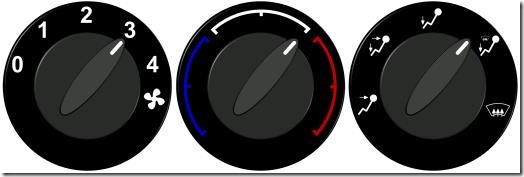

 The heated rear window button will have an icon like the one on the left, and the heated front windscreen will have one like that shown to the right.
The heated rear window button will have an icon like the one on the left, and the heated front windscreen will have one like that shown to the right.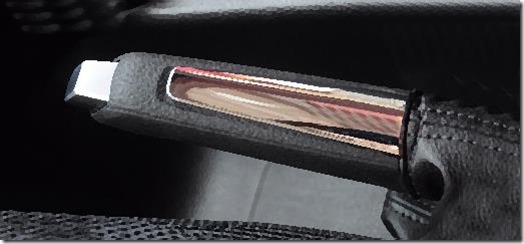 Since I first wrote this article, things have changed somewhat. More and more cars now have electronic handbrakes, along with other brake-assist functions. Where a car has a manually operated lever (the classic handbrake), refer also
Since I first wrote this article, things have changed somewhat. More and more cars now have electronic handbrakes, along with other brake-assist functions. Where a car has a manually operated lever (the classic handbrake), refer also  The system we have in the UK is that if you hold a full non-UK licence from a non-EU country, or a country which does not have a reciprocal arrangement with the UK, you can drive on that licence for up to 12 months.
The system we have in the UK is that if you hold a full non-UK licence from a non-EU country, or a country which does not have a reciprocal arrangement with the UK, you can drive on that licence for up to 12 months.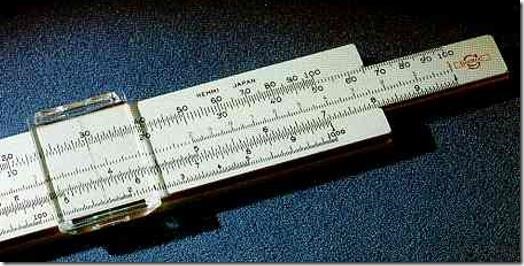
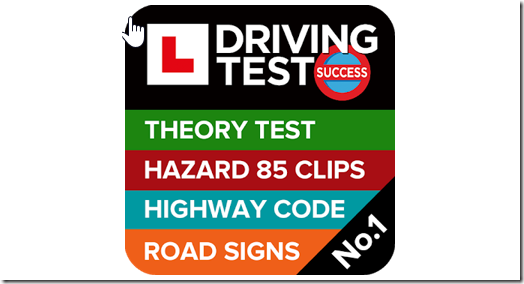 I recently saw an ADI claim that theory test apps are no good because they “only cover 5%” of the possible questions. It’s yet more complete bollocks from so-called “professionals”, and is only true – and even then, only partially – if you (or your pupil) is an idiot.
I recently saw an ADI claim that theory test apps are no good because they “only cover 5%” of the possible questions. It’s yet more complete bollocks from so-called “professionals”, and is only true – and even then, only partially – if you (or your pupil) is an idiot. This often crops up with my pupils, especially when mum or dad is involved in their driving practice.
This often crops up with my pupils, especially when mum or dad is involved in their driving practice.